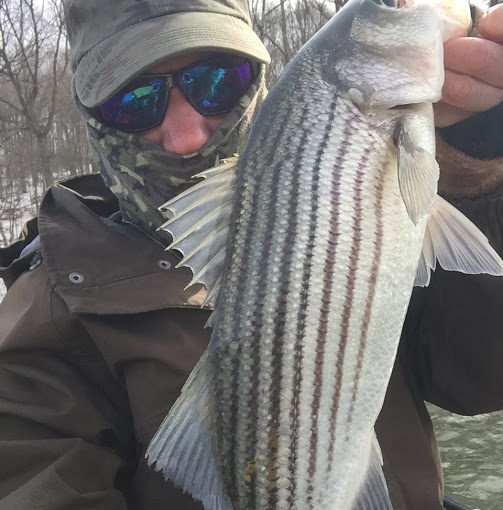Snow storms, schedules, and single digit temperatures have kept me off the water for a while. I was in need of some therapeutic fishing time. Small stream trout fishing wasn’t going to do it for me this time. I needed something a little bigger and a little more numerous, so I set off to explore a new option.
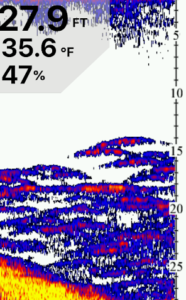
Normally, I’d say it’s too cold for striped bass in February. Over the years, I’ve heard a handful of magic numbers thrown out – 40, 42, 50 degrees. Fill in the blank for what temperature stripers start feeding. The fact is if a fish is alive and healthy, it eats. They might not eat very often or put forth much effort to do it, but they eat. If you find enough of them you’ll get bit, and if you find a lot you just might get bit a lot.
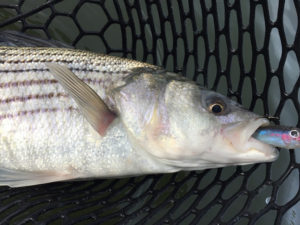
I tried a few different lures, but fell back on an old standby – the Fishbelly Hawg Shad. I switched back and forth between a 5″ and a 3.5″. They both proved effective. Alewife, Blueback Herring, and Common Dace were the colors I fished on this day, and they all caught fish.
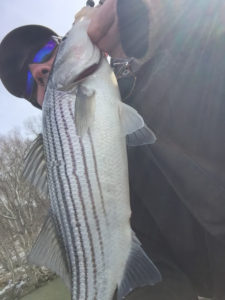
Besides a quality lure like the Hawg Shad, there are three additional keys to success in these frigid conditions. The first and most critical is finding the fish. You can’t catch fish that aren’t there. Fish the best structure on waters that support large populations.
The second is using enough weight to maintain contact with the lure without overweighting the presentation. A little glide is good. Losing touch with your bait is bad.
The third is not over working the bait. Less is more when it comes to winter fishing. Fast, aggressive movements seem to turn these semi-dormant fish off.
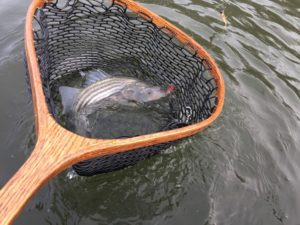
My Northkill custom landing net was an important tool to have onboard. Sure a couple fish were held up for a quick pic, but a couple dozen more were released without ever removing them from the water. The rubber net bag was easy on their slime coat, and single barbless hooks came out easily. Winter is tough enough. Let’s not be any harder on the fish than we have to be.
